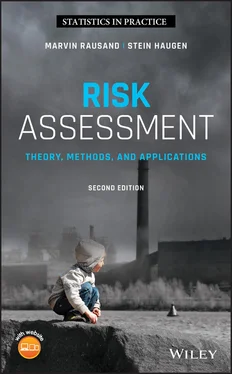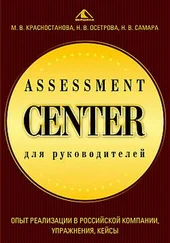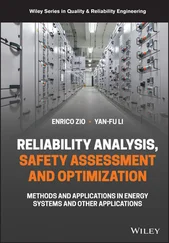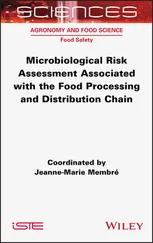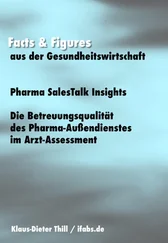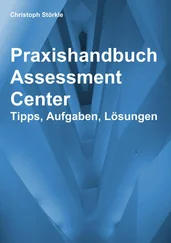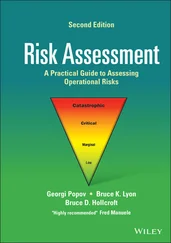666 668
667 669
668 670
669 671
670 672
671 673
672 674
673 675
674 676
675 677
676 678
677 679
678 680
679 681
680 682
681 683
682 684
683 685
684 686
685 687
686 688
687 689
688 690
689 691
690 692
691 693
692 694
693 695
694 696
695 697
696 698
697 699
698 700
699 701
700 702
701 703
702 704
703 705
704 706
705 707
706 708
707 709
708 710
709 711
710 712
711 713
712 714
713 715
714 716
715 717
716 718
717 719
718 720
719 721
720 722
721 723
722 724
723 725
724 726
725 727
726 728
727 729
728 730
729 731
730 732
731 733
732 734
733 735
734 736
735 737
736 738
737 739
738 740
739 741
740 742
741 743
742 744
743 745
744 747
745 748
746 749
747 750
748 751
749 752
750 753
751 754
752 755
753 756
754 757
755 758
756 759
757 760
758 761
759 762
760 763
761 764
762 765
WILEY SERIES IN STATISTICS IN PRACTICE
Advisory Editor, Marian Scott, University of Glasgow, Scotland, UK
Founding Editor, Vic Barnett, Nottingham Trent University, UK
Statistics in Practice is an important international series of texts which provide detailed coverage of statistical concepts, methods, and worked case studies in specific fields of investigation and study.
With sound motivation and many worked practical examples, the books show in down‐to‐earth terms how to select and use an appropriate range of statistical techniques in a particular practical field within each title's special topic area.
The books provide statistical support for professionals and research workers across a range of employment fields and research environments. Subject areas covered include medicine and pharmaceutics; industry, finance, and commerce; public services; the earth and environmental sciences; and so on.
The books also provide support to students studying statistical courses applied to the aforementioned areas. The demand for graduates to be equipped for the work environment has led to such courses becoming increasingly prevalent at universities and colleges.
It is our aim to present judiciously chosen and well‐written workbooks to meet everyday practical needs. Feedback of views from readers will be most valuable to monitor the success of this aim.
A complete list of titles in this series appears at the end of the volume.
Risk Assessment
Theory, Methods, and Applications
Second Edition
Marvin Rausand
Stein Haugen

This edition first published 2020
© 2020 John Wiley & Sons, Inc.
Edition History
John Wiley & Sons, Inc. (1e, 2011)
All rights reserved. No part of this publication may be reproduced, stored in a retrieval system, or transmitted, in any form or by any means, electronic, mechanical, photocopying, recording or otherwise, except as permitted by law. Advice on how to obtain permission to reuse material from this title is available at http://www.wiley.com/go/permissions.
The right of Marvin Rausand and Stein Haugen to be identified as the authors of this work has been asserted in accordance with law.
Registered Office
John Wiley & Sons, Inc., 111 River Street, Hoboken, NJ 07030, USA
Editorial Office
111 River Street, Hoboken, NJ 07030, USA
For details of our global editorial offices, customer services, and more information about Wiley products visit us at www.wiley.com.
Wiley also publishes its books in a variety of electronic formats and by print‐on‐demand. Some content that appears in standard print versions of this book may not be available in other formats.
Limit of Liability/Disclaimer of Warranty
While the publisher and authors have used their best efforts in preparing this work, they make no representations or warranties with respect to the accuracy or completeness of the contents of this work and specifically disclaim all warranties, including without limitation any implied warranties of merchantability or fitness for a particular purpose. No warranty may be created or extended by sales representatives, written sales materials or promotional statements for this work. The fact that an organization, website, or product is referred to in this work as a citation and/or potential source of further information does not mean that the publisher and authors endorse the information or services the organization, website, or product may provide or recommendations it may make. This work is sold with the understanding that the publisher is not engaged in rendering professional services. The advice and strategies contained herein may not be suitable for your situation. You should consult with a specialist where appropriate. Further, readers should be aware that websites listed in this work may have changed or disappeared between when this work was written and when it is read. Neither the publisher nor authors shall be liable for any loss of profit or any other commercial damages, including but not limited to special, incidental, consequential, or other damages.
Library of Congress Cataloging‐in‐Publication Data
Names: Rausand, Marvin, author. | Haugen, Stein, author.
Title: Risk assessment : theory, methods, and applications / Marvin
Rausand, Stein Haugen.
Description: Second edition. | Hoboken, NJ : John Wiley & Sons, 2020. |
Series: Wiley series in statistics in practice | Includes
bibliographical references and index.
Identifiers: LCCN 2019041379 (print) | LCCN 2019041380 (ebook) | ISBN
9781119377238 (hardback) | ISBN 9781119377283 (adobe pdf) | ISBN
9781119377221 (epub)
Subjects: LCSH: Technology–Risk assessment. | Risk assessment.
Classification: LCC T174.5 .R37 2020 (print) | LCC T174.5 (ebook) | DDC
363.1/02–dc22
LC record available at https://lccn.loc.gov/2019041379
LC ebook record available at https://lccn.loc.gov/2019041380
Cover Design: Wiley
Cover Image: © Soloviova Liudmyla/Shutterstock
To Hella, Guro and Idunn, Emil and Tiril
To Jorunn, Trine, Ingrid, Kristian and Brage, Nora and Alma
This book gives a comprehensive introduction to risk analysis and risk assessment, with focus on the theory and the main methods for such analyses. The objects studied are technical or sociotechnical systems, and we delimit our attention to potential, sudden, and major accidents. Day‐to‐day safety problems and negative health effects due to long‐term exposure are outside the scope of the book. Topics, such as financial risk are also outside the scope. More detailed objectives and delimitations of the book are supplied at the end of Chapter 1.
What is Changed From the First Edition?
This second edition is a major update of the first edition (Rausand 2011). Almost all sections have been reorganized and rewritten. The most significant changes include:
Chapters 1 and 2 are totally rewritten and many definitions have been rephrased.
Читать дальше
